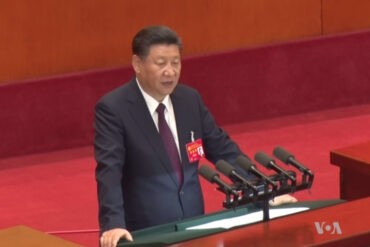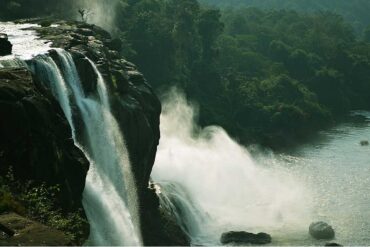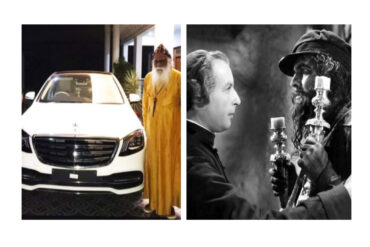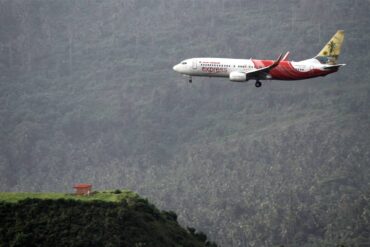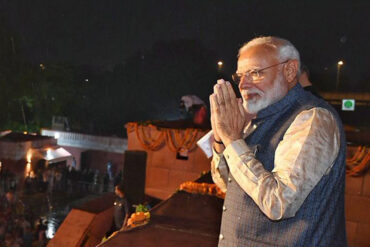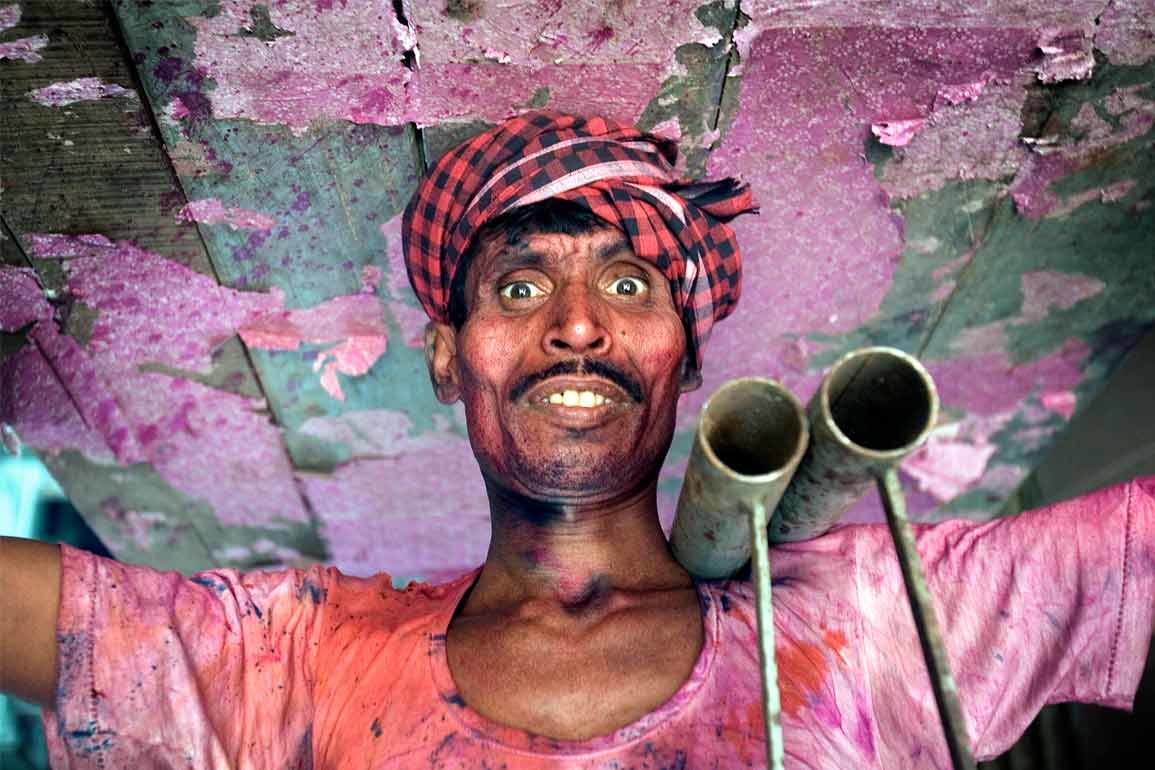One of the problems with being poor is being treated by people, (not by just the politicians) as if they, as a class, do not have the right to exist. This can be heartbreaking for humans, who when they are born, arrive in the cosmos in terms of what is called the accident of birth. The poverty, that is the lot of eighty percent of Indians, is something they don’t argue with. They are from rural areas, and maybe marginalized farmers, landless labour and craftspeople. This is what is called the aana jaana philosophy of the Indians, where early on, they are socialized into a particular ideology which communicates that they are paying for their past errors, and this has nothing to do essentially with lack of education or corrupt politicians intent on spending crores of rupees on building idolatory statues rather than feeding the declassed and the poor.
As poverty is widespread in India, and people don’t crumble in the face of disaster, a certain philosophy that some people are replaceable, begins to develop. This ideology often applies to all those “others” who are seen to be ‘weaker sections’ of society, so its not just the poor, it’s also the lower caste communities, tribal peoples, minorities, third gender individuals and women. The attitude of dominant groups is to treat them as “rubbish” or “refuse”.
Zygmunt Bauman in his very valuable book Wasted Lives argues that along with the idea that there is a class of people which is treated as if they are the ‘underbelly’ of society because they are unwanted, unreliable, unemployable, “un” everything, there is the idea that consumption is the only thing that makes any sense. Along with over consumption, (or what has been called conspicuous consumption) comes the idea of obsoleteness or waste. It is extremely tragic that the mountains of waste created by an obsessiveness to own ever new things, which are never fully owned or utilized, begins to over run the landscape. Nothing can now be seen except, in every city, or by every railway track, masses of waste, which the unfortunate who do not have access to anything at all, must now begin to excavate and sort.
The resistance to curtailing desires which is necessary for humans to survive has now been forced on us by Covid-19. The enormity of the deaths, the vulnerability of populations to this disease has led to the change in world view of many who had earlier not been converted to the Greens debates. There are however two ways of looking at Covid-19. One is that it is curable, if only we can find the vaccine. This leads to a lot of hope, as people believe that one day we will survive the chances of catching what is a fatal mutation of the common cold. The other is herd immunity.
The cold virus and cancer have always been resistant to cure, whatever pharma companies and large industrial houses may say, and have usually been understood traditionally, in terms of the metaphor of time. The common cold takes a week to burn out, with cancers however, the questions are always about buying more time for the patient to say goodbye to family and friends. “Recession” is the phrase clinically used in care facilities, not “Cure from Cancer”. Susan Sontag who wrote her very brilliant essay on Tuberculosis and Cancer, before she died of cancer herself, said that that the first was a 19th century illness, which was an index of closetedness, while cancer was a metaphor for industrial encroachment, for it got into everything.
AIDS, we well know, was the disease associated with the over communication that was globally prevalent in the late 20th and early 21st century. It was associated with concentric circles of separation and distancing and like Covid-19 brought in its wake a huge quantum of fear. People believed that safe sex and safe needle-use could protect them, but the relation between the virus and human carriers became domesticated only after several decades. Corona virus is popularly thought to be a laboratory experiment with pathogens which leaked out after foreign collaborators were involved in war experiments involving Chinese agents, or if not that, the environmentally hazardous, wild animal slaughter-house markets in China. The Wuhan laboratory is thought to be the origin of the disease. The rumour mongering and gossip about origins has made the Chinese least anxious, as they have now proceeded to engage in cross border attacks on the Indian side of what was once Tibet.
The migrant workers have been the ones who have been most affected in this pandemic. According to a survey conducted by Noman Majid on behalf of Azim Premji University, (www. APU Survey), 5 million workers would have moved from urban locations in the first phase of Covid-19, because of adverse urban housing, hoping to return to their villages and safe ground. The media has actively reported the difficulties of their condition, and has brought to us the most puzzling and tragic difficulties relating to food, water, survival of labourers and workers trying to catch buses and trains to go home. The death toll has been frightening, as workers were often put on buses or trains in very terrible summer conditions without adequate food or water, in trains which were quite haphazard and complex in their routes and destinations, if at all they arrived. These images are so heart breaking that India will never forget the year that disease overtook our land. Those who walked hundreds of kilometres in the hot sun were equally at risk, if not more so than travellers on public transport, and pictures of hungry people with calloused feet, dying men, women and children became our daily media feed.
When we look at landless wage labour, which is the major subject of our enquiry, regarding push pull theory, we have to ask the question how many of them are artisans? The so called ‘civilizational’ history of our country, which goes back to 5000 years, in the popular imagination, is according to Jyotindra Jain, (the former curator of the popular Arts and Craft Museum in the Purana Kila Complex), the work of the Dalits and other backward castes. We are here talking about their contribution as lalitkar, murtikar, and the contribution of women, too, as housewives, in terms of production of design, and innovators of symmetrical forms in handwork. Migrant labour often consists of skilled weavers, goldsmiths, sculptors and workers in wool, metal, ivory and vegetable dyes. Can we even begin to evaluate the loss in terms of abilities when they arrive in the city to carry out work which is remunerative as brick layers and sewer cleaners?
This huge loss in terms of ability and technique is yet to be studied. To conduct a census to ask “What is your talent” is the first part of the necessary project. The second is to ask, “What else can you do?” Culture Studies is essentially interested in the myriad ways in which human life is represented, and art forms become of great significance in terms of the meaning systems which are represented. Stories are told time and again through the craft traditions of events and calamities, of disease and war. Dances and songs, paintings, tapestries, and now photography today, invent and innovate time and again, telling us of how people understand the changes in their lives, and the nature of the heroic.
Famine in the Time of Covid
When we look at a disease, it is the symptomology of something else that calls attention. The survival of the fittest has a corollary, and that is the access to food, water, shelter, medical help, education, money and power. Eighty percent of our people are actually vulnerable and can never build up a required immunity to disease because they are left to their own devices. Even activists become vulnerable, as those who have been educated in cities return to their people to organize workshops, camps, cultural festivals, but when they fall ill, they share the same life chances as the people whom they work with. Access to medical care is made difficult by bad roads, and the ineptness of money hungry bureaucrats. We can see in the case of food distribution that the Centre fell short of facilitating the states, which in a federal system of government is fatal to the people, and the granaries filled with cereals rotted, (bought cheaply from poverty stricken farmers after harvest at minimum wage) as the grains were not moved and redistributed in time. The people are hungry, they are dying, there is food, but the greed of petty politicians who intervene, not as catalysts, but as obstacles, becomes known to all.
There is a solution to this problem, and that is to learn from one’s mistakes. Covid-19 is going to be with us till the cycles of its infections and reinfections naturally culminate in what is called herd immunity. This means 70 percent of the population will have been exposed, and will have produced plasma which can be used to cure others who can afford to access hospital care. The formula is of slowly but surely going back to work, meaning agricultural and industrial production so that a lease of life is given to other institutions, namely knowledge producing and other cerebral resources, including art and artisanal work.
Artisans and artists are to be found in every corner of India. We see small children at the street corners of Delhi doing skilled somersaults, a task their parents have given them so that they can pay for some food, while the elders are out on contract wage labour. Your auto driver is perhaps a skilled musician. Your dhobi wali probably draws expertly or sings excellently. The list is endless, but we do not know what their talents are, unless we ask the right kinds of questions. For artistic work to be evident the belly must be full. The artisan, who is meticulous in every respect, must have the right to feed his family. The industrial war machine sees them only as wage labour, which can be dispensed at will. With hours of work and concomitant wages always somewhat askew, and the immoral imperative of capitalism to draw more and more out of the worker till such time as he/she drops dead without telling a story, art itself is extinguished.
It is crucial that the government dispenses money and food during these two years when the pandemic of Covid-19 is expected to rage, as loans to the poor will only create more hardship. People notice how the industrialists, politicians, petty bourgeoisie including intelligentsia live, what they buy, what they eat, how they spend their time. People know that the falseness of their hopes lies in the building blocks of a capitalist global economy where they are constantly told that there is no food, but meanwhile, the crops standing in the fields cannot be harvested, and in the granaries there is rot. Politicians can skim off the fruits of the land, and the labour of the people for one or two terms, spinning new utopias to seduce the masses, but as it is popularly known these totatalitarian democracies do not last for ever. The consent to totalitarianism is false. The consent is manufactured out of fear of the venom of the politician, the local goons, or the ability to buy it with small tokens of vested interest such as money and alcohol.
In the seasons to come, we will see that the local communities which make up our villages and small towns will fall back into a space we have only imagined, where fear and hatred compound, and everyone becomes afraid of the other. It could be the hacker on the computer, the football or kabaddi playing ideologue who commands his troupe of friends and admirers to rape and pillage, the women who never emerge from their homes, or are incapable of going back to their work place because of the climate of fear, the children who point fingers at others who do not resemble themselves…the list is endless. In contrast to that, is the faith humans have always had in one another, which transcends the line of difference, rivalry, bigotry and hatred. It is that world which we must seek to build to assure workers that their lives are precious, and that every attempt must be made by the state to classify them as human beings. The recognition of humans is the first endeavor, and survival of our world depends on this simple task, rather than comparing ourselves with other tyrannical and authoritarian world leaders.
The New World and its Constituencies
Two years from now, after the cycle of deaths by Covid 19 are complete, we will be faced with how to deal with the immense sense of loss and despair that will engulf those who have lost members of their family or dear friends or respected colleagues. Death is an annihilation of memory, very often we may visually remember, as in a dream all that we held most dear about loved ones. However, we have no recall of their voices. Artists and artisans have given us a huge volume of materials through digital means of the work that they and their predecessors have produced. What is interesting is that we are dependent on electricity for this recall. However, the tenuousness of this access is not just a matter of class locations such as funding, airconditioning, lighting, preservation tools, imported technologies, it is also about climate change and its impact.
Climate change has made us understand melting ice caps, and raised temperatures, which in turn increase the volume of sea levels. Unseasonal rains, and coastal flooding have become as endemic as disease. Farming populations, with their allied crafts, have to be protected by policies, not just by assuring them seasonal remuneration or cash handouts, though these are essential for their immediate survival. They have to be trained to return to their lands , or to adapt to new lands, after the season of flood, and to rehabilitate themselves on land with new soil compositions, which may have turned saline in sea coast villages. Covid 19 along with flood rehabilitation is one of the most exacting circumstances in which coastal people and riverine people would find themselves in. Sundarbans in 2009 was affected by cyclone, and the people returned to their homes, starting their fishing and horticultural practices, market gardening and tourist promoting activities as soon as they could. The fear that they felt is palpable. Today, we see that the cyclone Amphan has wiped out their struggles and hopes, but the versatility of the Indians has depended on their determination to remain in familiar spaces. Government officials have never quite been able to communicate to people who have been relocated in flood plains that life here is dangerous. It is like alcohol and tobacco ads, no amount of advertising its terrible dangers is helpful when the state actively promotes it as anodyne to hungry workers for their troubles and receives revenue from it. First petitioners are created to fill the fields, then the area is threatened with policies which ensure that the same lands are emptied for the good of the Environment.
Paolo Freire coined the term the intelligentsia of the people to describe first generation learners who would be able to mediate between local communities and scientists, so that through mutual dialogue they would come to an understanding of the necessity of survival of people who live of the land, such as fishers, farmers and artisans. It is time now for the State to enter into dialogue with migrant workers, before we all go into entropy. Their poverty could be borne only because they had access to wages, and seasonal harvests. By the present gut level reactions by the Centre to keep the sensex stable and the industrialist agricultural and defence lobbies pleased, the workers have been decimated. Two percent interest on loans, when the displaced peasantry has lost everything, is cruelty indeed. To call back the loans of diamond merchants and diaspora traders dealing with information technology and aircraft requires more intelligence and will, which the politicians, bankers and bureaucrats are collectively saying they are incapable of. Once manpower or human resources has been crushed, and women excluded, the politics of Hindutva will express itself through a huge cultural extravaganza, where the craft communities will be sacrificed in the name of industrial progress

